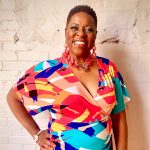 “I don’t want to play with them. They’re mean.”
“I don’t want to play with them. They’re mean.”
(My five-year-old son about seven years ago when playing on the playground)
I remembered my son’s declaration last week while facilitating a board retreat in Alabama. A Black male board member sat in his seat fidgeting and looking extremely uncomfortable while I and my white counterpart, Dr. Renee Rubin Ross (The Ross Collective) facilitated a conversation about the racial tension their board was experiencing. About one third of their board had been visibly absent for most of our training over the course of three months. Those missing in action were white men. Only two out of eight were participating.
We had created a safe and brave space and had all heard the agreements for the conversation and meeting. Stan’s (not his real name), apparent discomfort drew attention to him. He was invited to speak. At first, he seemed reluctant but then he blurted out “I don’t want to work with white people and try to convince them to get along with me.” The room grew eerily silent. We all sat looking at him and at one another. Stan continued, “I can be at work or making strides in my own community where I know I belong and can make change.”
There it was. He had said the magical word “belong.”
This idea of feeling like an outsider was not new to me as a facilitator. Too often, I have heard nonprofit board members of color share that they have felt invisible, overlooked, and powerless. Many are frustrated and even pessimistic that change will occur. Even more exit their board positions exasperated and visibly shaken like Stan.
Thankfully, the white members of this board did not run like hell towards the door. They stayed and listened one by one to other members of color who were also disgruntled. Another board member of color brought in a copy of a recent annual report of the organization that exhibited a less than flattering and stereotypical photo of a Black man in a hoodie and dark shades, wearing a mask with a distasteful image on the front. The other members of color shook their heads in dismay as the annual report was distributed around the room.
It was a moment of reckoning for us all!
The white board members listened with great curiosity and what seemed like appreciation. There was even an apology from one white board member, Karen (not her real name) who admitted to being oblivious to the feelings and issues presented by the board members of color. “I just never thought about it,” she said.
It’s time for all of us to think about it!
The Executive Director and Chair of this board has committed to changing the board’s culture by continuing the work. The board seems open to making the changes they know will be needed to create and nourish a culture of inclusion and belonging. They understand that it’s a journey and they had at least taken the first step in the right direction.
See them!
They understand that to build a culture of belonging, their board members will need to be “seen” which means being at the table, offering new ideas, and contributing to decisions. Board members like our justifiably resentful board member, Stan will have an opportunity to be recognized for the unique contribution he brings to their work.
Connect them!
Next board members should feel connected. This board has agreed to holding safe and brave spaces in social settings for board members to get to know one another and learn why they are all passionate about the mission of the organization. Renee and I even suggested sharing race stories to help the board and their peers get a glimpse into different upbringings, family traditions, and varying beliefs. This will hopefully garner understanding and mutual respect for their differences.
Support them!
Our board on this day says they wanted to feel supported. They want some accountability policies to be put into place for board members who fail to show up and give of themselves and pour into collective group work or who shy away from tough conversations related to race. I reminded them that they may experience some losses. Everyone won’t stay on for the ride. They also would like to weigh in on decisions about the images of people of color reflected in the annual report and other collateral shared with their stakeholders.
Help them to feel proud!
Last, board members want to feel proud of the organization’s values and purpose in the community. They challenged the administration to take a stance on diversity, equity, inclusion and belonging. This could mean creating a DEIB statement that can be shared on their website and in the signature section of staff emails. The statement could also be read at the top of future board meeting agendas to remind them about their commitment. The organization, which has been a pillar in their city, could use its power and influence to help dismantle racist practices not only on the board but in the communities that they impact.
Focusing on the power of creating a culture of belonging can draw in and galvanize communities that were once clueless about the lived experiences of their neighbors. For this to happen, all key players need to be in the room to be a part of the conversation.
The End Game
The end game for cultivating a culture of belonging is better results and better solutions. I had an opportunity to speak with Stan and asked if he felt better after our training ended. He said he did and vowed to stay on the board if the white board members would be willing to rethink or unthink their deeply ingrained beliefs about people of color. We acknowledged that this would take some time and intentional education about racism and how to dismantle it. We also both agreed that it wasn’t his responsibility to teach others how to be kind, respectful, and inclusive. In other words, to play nice!
That brings me back to my son. He is now 12 years old, and he understands what belonging feels like. He is an avid basketball player and has built deep relationships with his teammates. They know to win, they must leverage each person’s talent, high-five one another when they make winning moves, and celebrate and appreciate their collective efforts even when they don’t win. For them, it’s about more than winning the game.
I may bring the team in to help facilitate my next board training. It seems they make have some powerful plays that will help boards to stay on track to do the hard work and keep moving towards their DEIB goals. The conversations must continue. This is the only way healing will occur.
 Christal M. Cherry, The Board Pro, is passionate about helping board members to transform the world through board service.
Christal M. Cherry, The Board Pro, is passionate about helping board members to transform the world through board service.
Would you like to learn more about the new DEI experience for boards, “Planting the Seeds for Change,” developed by Dr. Renee Rubin Ross and me? We’ve created a safe and brave space for board members like Stan and Karen to speak authentically about their lived experiences and how they impact their service as a board members. Reach out to hello@theboardpro.com to arrange a complimentary 15-minute consultation. Remember, this is a journey with no fixed end point. Reach out and let’s get to work!